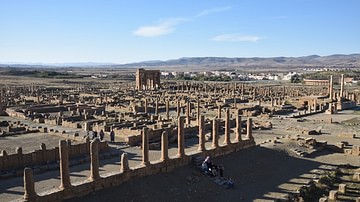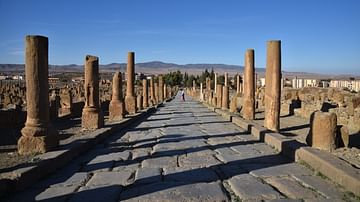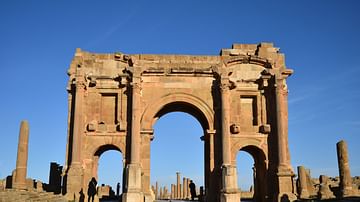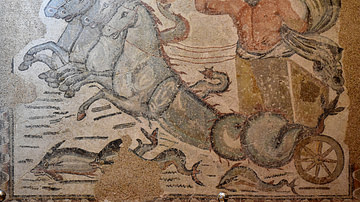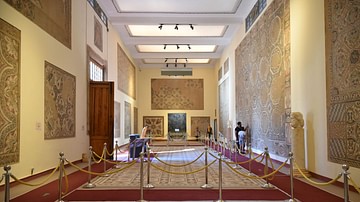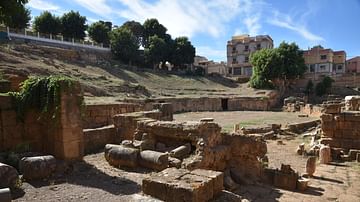Illustration
The Roman theatre of Thamugadi (modern-day Timgad in Algeria) was cut into the side of a small hill south of the forum. It was designed to hold up to 4,000 spectators. A dedication dates the building to the reigns of Marcus Aurelius and Lucius Verus (161-169 CE). It was completed in 168 CE and was quarried by Justinian's soldiers when they built the nearby fortress in 539 CE.
Timgad lies on the northern slopes of the Aurès Mountains in present-day Algeria. Emperor Trajan founded the city as a military colony in 100 CE. With its square enclosure, orthogonal design, and two main roads, the cardo and the decumanus crossing at right angles through the city, Timgad is model town planning based on a grid system.
About the Author
Cite This Work
APA Style
Raddato, C. (2022, December 21). Roman Theatre of Timgad. World History Encyclopedia. Retrieved from https://www.worldhistory.org/image/16832/roman-theatre-of-timgad/
Chicago Style
Raddato, Carole. "Roman Theatre of Timgad." World History Encyclopedia. Last modified December 21, 2022. https://www.worldhistory.org/image/16832/roman-theatre-of-timgad/.
MLA Style
Raddato, Carole. "Roman Theatre of Timgad." World History Encyclopedia. World History Encyclopedia, 21 Dec 2022, https://www.worldhistory.org/image/16832/roman-theatre-of-timgad/. Web. 24 Apr 2025.




